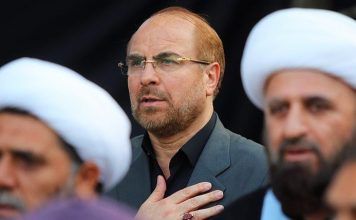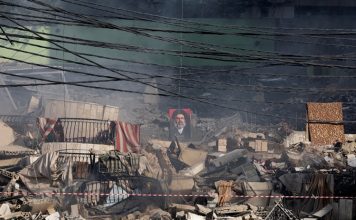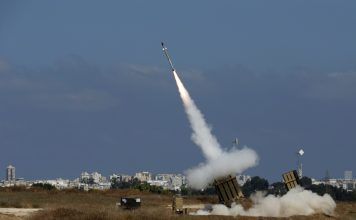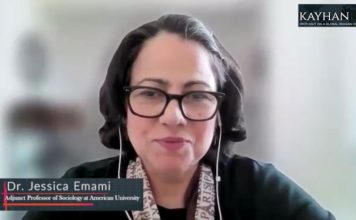By Nidal al-Mughrabi and Ramadan Abed
CAIRO/GAZA, July 15 (Reuters) – Israel struck the southern and central Gaza Strip on Monday to put more pressure on Hamas, following a weekend strike targeting the militant group’s leadership, which killed scores of Palestinians who had sought shelter in a makeshift camp.
Two days after the Israeli strike turned a crowded swathe of Mawasi near the Mediterranean coast into a charred wasteland littered with burning cars and mangled bodies, displaced survivors said they had no idea where they should go next.
“Those moments as the ground shook underneath my feet and the dust and sand rose to the sky and I saw dismembered bodies – was like nothing I have seen in my life,” said Aya Mohammad, 30, a market seller in Mawasi, reached by mobile text message.
“Where to go is what everybody asks, and no one has the answer.”
Mawasi on the western outskirts of Khan Younis has been sheltering hundreds of thousands of Palestinians who fled to the area after Israel declared it a safe zone. Israel said its strike there on Saturday targeted Hamas military commander Mohammed Deif, an architect of the Oct. 7 assault on Israeli towns and villages that triggered the Gaza war.
SPECIAL REPORT- Hunted by Hamas: Reconstructing the Attack on Israel’s Kibbutz Be’Eri
The military said it struck an open area, with several buildings and sheds, adding it was a compound run by Hamas and not a tented camp.
Palestinian officials say at least 90 people were killed on Saturday and many hundreds wounded. Reuters journalists at the scene filmed carnage, with residents carrying the wounded and dead amid flames and smoke.
Further south in Rafah, the main focus of Israel’s advance since May, residents reported renewed fighting on Monday. Israeli forces in western and central parts of the city blew up several homes, they said. Medical officials said they recovered 10 bodies of Palestinians killed by Israeli fire in eastern areas of the city, some of which had already begun to decompose.
The military also stepped up aerial and tank shelling in central Gaza in the Al-Bureij and Al-Maghazi historic refugee camps. Health officials said five Palestinians were killed in an Israeli air strike on a house in Maghazi camp.
Palestinian health officials said 11 Palestinians were killed in an Israeli air strike on a house in Al-Nuseirat camp in central Gaza Strip earlier on Monday.
Palestinian Leader Mahmoud Abbas Criticizes Khamenei for Backing Hamas
The Israeli military said the air forces struck dozens of Palestinian military targets across Gaza, killing many gunmen. It said forces killed gunmen in Rafah and central Gaza, sometimes in close combat.
A statement from the Al-Quds brigade, the armed wing of the Islamic Jihad militant group, said its fighters were engaged in fierce battles in the Yabna camp in Rafah.
Later on Monday, in Deir Al-Balah in the central Gaza Strip, where Israel hasn’t yet invaded and hundreds of thousands have taken refuge, the municipality issued an urgent statement saying it was no longer able to provide 700,000 people in the area with drinking water after running out of fuel.
“We urge citizens to preserve what is left in their private tankers and we stress the need to maintain the spirit of cooperation and sharing,” the statement said.
Speaking amidst the rubble of his family home in Deir Al-Balah, Walid Thabet told how an Israeli strike earlier on Monday had killed members of his family. Rescue workers and neighbours sifted through the debris to search for survivors buried beneath the wrecked building.
“My mother, an elderly woman, was sitting with me upstairs. She went downstairs and after five minutes, I pulled her out from under the rubble. We also pulled my sister out from under the rubble, and my sister’s children too,” said Thabet.
“Those who died are my mother, my sister, and my sister’s children. Children! One was two and a half years old, and the other two, I don’t know what happened to them. God willing, may God save them,” he added.
CEASEFIRE TALKS
Saturday’s carnage in Mawasi, one of the deadliest Israeli strikes of the war, has overshadowed negotiations that both sides had previously described as the closest yet to a lasting ceasefire. A senior Hamas official said on Sunday the group had not walked out of the talks despite the Mawasi strike.
Israel says another senior commander was killed in the strike but it has not yet confirmed the fate of Deif. Hamas officials have denied Deif was killed.
U.S. Secretary of State Antony Blinken met with Israeli National Security Advisor Tzachi Hanegbi and Israel’s Minister of Strategic Affairs Ron Dermer in Washington on Monday to discuss “practical solutions that we have in mind” to bridge differences between Israel and Hamas on a ceasefire deal, State Department spokesperson Matthew Miller said.
“I will tell you what we heard directly from two senior advisors to Prime Minister (Benjamin) Netanyahu today, and that is that Israel is still committed to reaching a ceasefire…. There are a few remaining sticking points and we’re working to try and resolve those. We’re committed to trying to do that.”
Following the Israeli strike targeting Deif, Blinken expressed “serious concern about the recent civilian casualties in Gaza,” Miller said, adding that Israel had a right to target militants but must do more to reduce civilian casualties.
The Gaza health ministry said at least 38,000 Palestinians have been killed in Israel’s military offensive since Oct. 7. It does not distinguish between combatants and non-combatants but officials say most of the dead throughout the war have been civilians.
Israel says it has lost 326 soldiers in Gaza and says at least a third of the Palestinian fatalities are fighters.
The war began after a Hamas-led attack inside Israel on Oct. 7, by militants who killed 1,200 people, mostly civilians, and took more than 250 hostage to Gaza, according to Israeli authorities.
Citing a report by the United Nations Environment Programme, the U.N. Palestinian refugee agency UNRWA said in a post on X it would take 15 years to clear around 40 million tons of war rubble in Gaza. The effort would need 100+ trucks and cost over $500 million
“Debris pose a deadly threat for people in the #GazaStrip as it can contain unexploded ordnance and harmful substances,” it added.
The United Nations said on Monday that it will start bringing in more armored vehicles and personal protection equipment for its humanitarian aid operations in the Gaza Strip after receiving approval from Israeli authorities.
The U.N. has long complained of obstacles to getting aid into Gaza – Israel inspects and approves all trucks – and says it is also struggling to distribute aid amid “total lawlessness” within the enclave of 2.3 million people, where a global hunger monitor last month said there is a high risk of famine.
(Reporting by Nidal al-Mughrabi.Additional reporting by Ari Rabinovitch in Jerusalem. Writing by Nidal al-Mughrabi and Idrees Ali :Editing by Peter Graff and Sharon Singleton)













